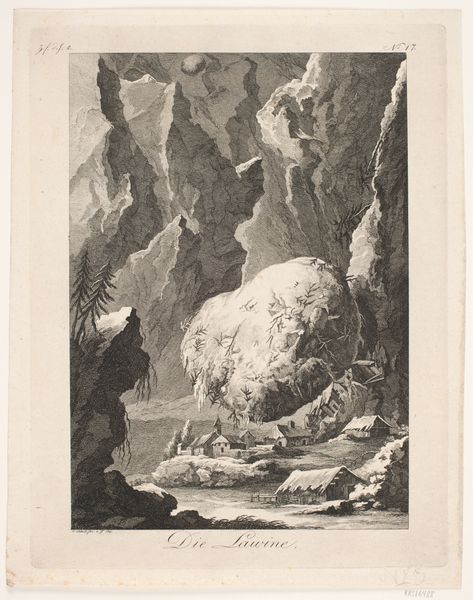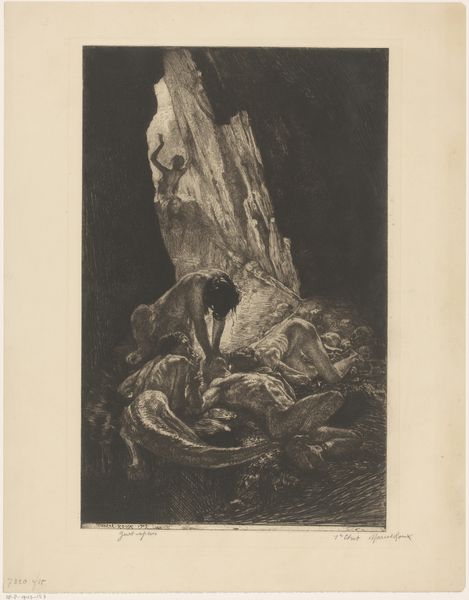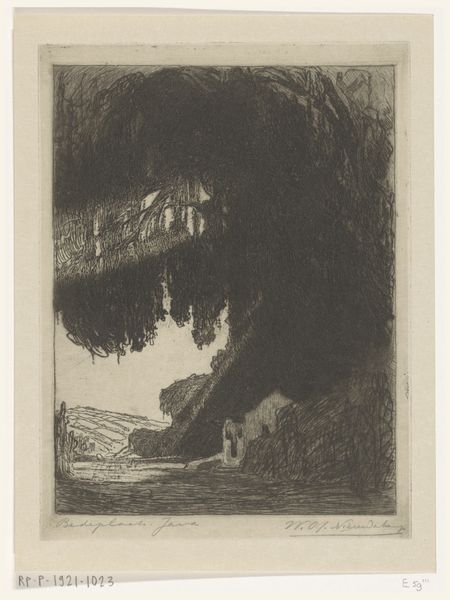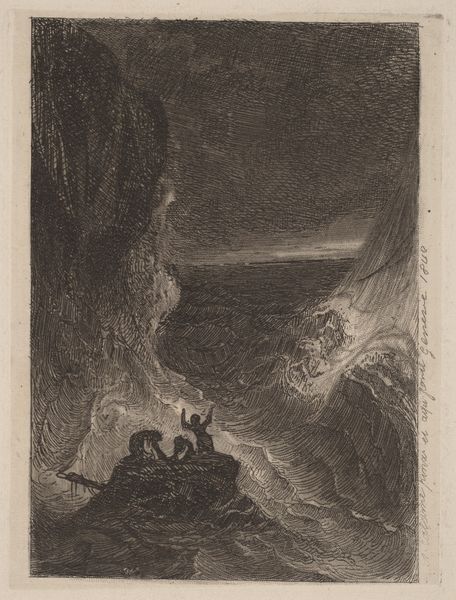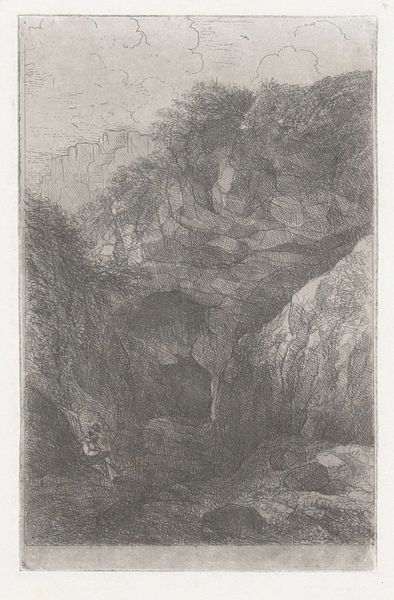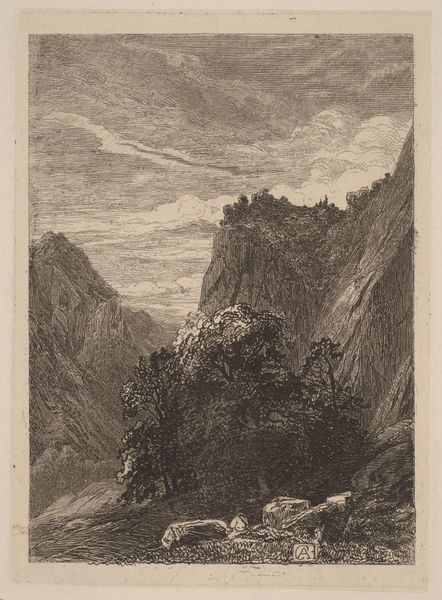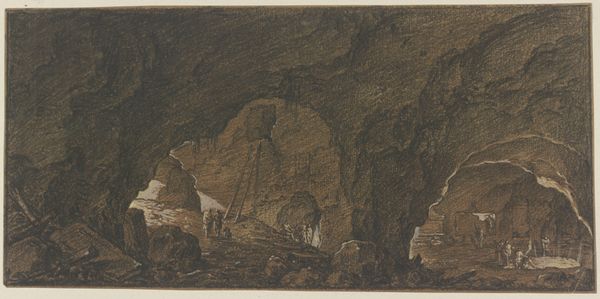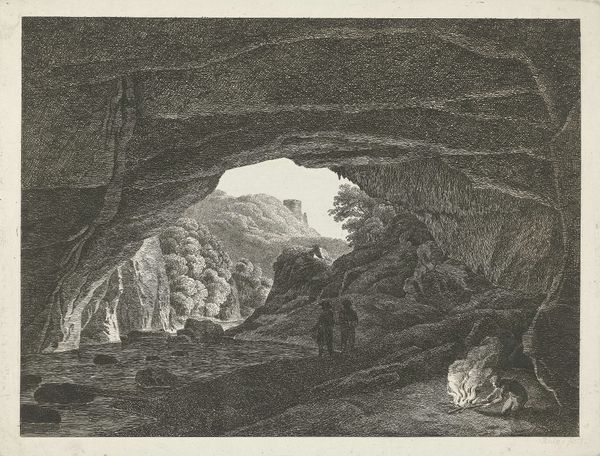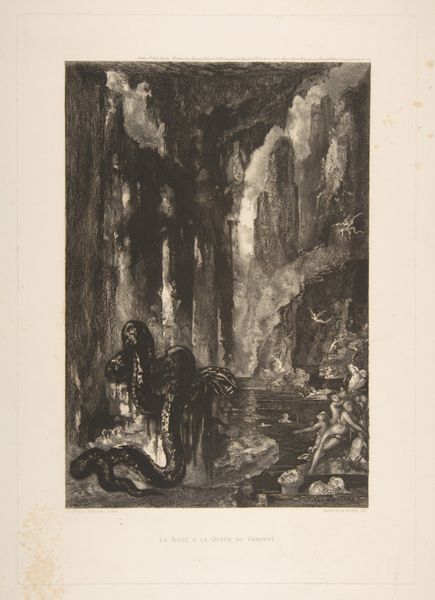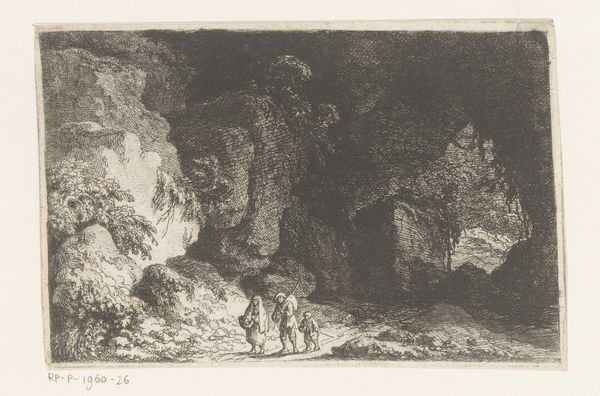
Dimensions: height 324 mm, width 230 mm
Copyright: Rijks Museum: Open Domain
Editor: So, this is "Gezicht op een grot," or "View of a Cave," an etching by Martinus Antonius Kuytenbrouwer Jr., likely made sometime between 1831 and 1897. It feels very gothic to me, this shadowy opening giving way to a sort of revealed interior. How do you read it? Curator: I see a convergence of natural and constructed symbols. The cave itself is primordial, evoking notions of the subconscious, the earth’s womb, a place of hidden knowledge. Yet, the figures huddled within and the architectural elements suggest human intervention. Doesn't that window seem almost like an all-seeing eye? Editor: Yes, it does! And that little bridge higher up, is that suggesting progress, or escape perhaps? Curator: Precisely. The bridge, window, and even the gathering of figures, they represent civilization attempting to impose order onto the chaotic, unknown space of the natural world. Notice how dark it is near us compared to the figures bathed in light? Do you think that darkness could represent a journey of self discovery, or the challenges of inner reflection, perhaps? Editor: That makes sense. It feels like a staged drama, a scene from some unknown story… maybe something about confronting the unknown? Curator: Perhaps. Romanticism often uses the sublime – think grand, overwhelming landscapes – as a mirror to the inner life. This cave, then, isn't just a geological formation; it's a landscape of the soul. Editor: It's fascinating how much a simple cave drawing can reveal about cultural anxieties and the relationship between humanity and nature! Curator: Indeed. The symbols embedded in the image allow us to traverse the artwork. Visuals have always held powerful collective and emotional truths, it makes this artwork both historically fascinating and, simultaneously, so contemporary.
Comments
No comments
Be the first to comment and join the conversation on the ultimate creative platform.
